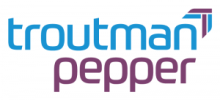The recently enacted health care legislation (the Patient Protection and Affordable Care Act of 2010) provides a new 50% tax credit or equivalent cash grant to small biotech companies for investments made in 2009 and 2010 to develop diagnostics, preventative treatments and cures for diseases and medical conditions. The new “section 48D” credit/grant is only available on a temporary basis and is subject to various limitations. On May 21, 2010, the Treasury Department initiated the new credit program with the release of Notice 2010-45 (the “Guidance”). See the electronic version of the Guidance (36 pages).
The credit is 50% of the taxpayer’s “qualified investment” in a “qualified therapeutic discovery project” in a taxable year beginning in 2009 or 2010. The program is capped at $1 billion of credits/grants ($2 billion in eligible costs) and each taxpayer will be limited to $5 million of credits/grants ($10 million in qualified investment) regardless of the number of the taxpayer’s projects. These benefits are generally available only to companies with no more than 250 employees (subject to aggregation rules for affiliated entities) and that incur qualifying costs associated with the discovery of therapeutic products. Considerable competition for these credits is expected and eligible companies should be prepared to act quickly once Treasury issues the formal application (expected on June 21, 2010). The program has a short time frame.
Applications may be filed online on Form 8942 beginning June 21, 2010. The deadline for filing applications is July 21, 2010. A separate application must be filed for each project. The Department of Health and Human Services (“HHS”) and the Internal Revenue Service (“IRS”) will review applications until October 1, 2010 and all awards will be decided and notified to applicants by October 29, 2010. Decisions on awards are non-appealable. For an approved applicant that elects to receive the grant for 2009 qualified expenditures, payment of the grant may be made as soon as October 29, 2010. Grants for 2010 expenditures will be paid in most cases within 30 days after the end of the 2010 tax year.
Awards are not made on a “first-come, first-serve” basis. Rather, projects will be selected according to a competitive application process, based on discretionary evaluations performed by HHS and the IRS. The Guidance establishes application filing and certification procedures, and elaborates on certain eligibility criteria that winning projects must satisfy. The Guidance also describes information that must be included in a Project Information Memorandum (PIM) to be filed with the Form 8942.
Taxpayers will be required to disclose on Form 8942, among other things, the legal entity type and ownership of the applicant; a description of the various costs comprising the qualified investment for 2009 and 2010; the number of full-time and part-time employees and contractors working on the project in the United States and their average salaries; whether the project will produce new or significantly improved technology; whether the project is expected to lead to the construction or use of a production facility in the U.S. within the next five years; and whether the taxpayer is requesting a credit or a grant in lieu of credit.
The Project Information Memorandum will be reviewed by HHS to determine whether the project meets the definition of a qualified project and whether the project has a “reasonable potential” to meet the goals of the statute. The Guidance provides detailed information on the content and format of the PIM, including limitations on the length of responses.
Qualified Investments
To be eligible for the credit or grant, costs must be paid or expected to be paid in the taxpayer’s 2009 or 2010 taxable years, and must be “necessary for and directly related to a qualified project.” Compensation of certain corporate officers, interest expense, facility maintenance expenses and other overhead expenses are not eligible expenses.
Qualified Projects
A “qualified project” must be described in one of the following categories:
1. A project designed to treat or prevent diseases or conditions by conducting pre-clinical activities, clinical trials, and clinical studies, or carrying out research protocols, for the purpose of securing approval of a product from the FDA. This category does not include generic drugs, biosimilar products, dietary supplements and most cosmetics.
2. A project designed to diagnose diseases or conditions or to determine molecular factors related to diseases or conditions by developing molecular diagnostics to guide therapeutic decisions. A project designed to diagnose diseases need not determine molecular factors, and would include point-of-care diagnostics for infectious agents.
3. A project designed to develop a product, process, or technology to further the delivery or administration of therapeutics. For this purpose, therapeutics means drugs or medical devices (e.g. a drug-delivering stent). Delivery of non-drug “therapy” such as speech, physical and cognitive therapies, do not qualify.
Discretionary Selection Criteria
A project described in one of the above standards will then be evaluated according to its potential to generate medical discoveries, enhance healthcare benefits, and create U.S. jobs. Specifically, the HHS will determine whether a project has the reasonable potential:
- to result in new therapies to treat areas of unmet medical need, or to prevent, detect, or treat chronic or acute diseases and conditions,
- to reduce long-term health care costs in the United States, or
- to significantly advance the goal of curing cancer within the 30-year period beginning on May 21, 2010.
A “new therapy” must be novel and distinguishable from therapies currently on the market. The Guidance provides as examples of “unmet medical needs” novel influenza vaccines, broad-spectrum anti-viral medications and novel antibiotics. Applicants are asked to explain how their project is likely to reduce healthcare costs and to denote actual cost savings and an estimate of those savings.
If a project is determined to meet the foregoing medical criteria, employment-related factors will be evaluated based on a project’s potential:
- to create and sustain (directly or indirectly) high quality, high-paying jobs in the United States, and
- to advance United States competitiveness in the fields of life, biological, and medical sciences.
There is no guidance as to what constitutes a “high-quality, high-paying job” for this purpose. Presumably the IRS / HHS will use the employment data required to be disclosed on the Form 8942 to make this evaluation.
Ineligible Grant Recipients
The following entities are not eligible to apply for grants in lieu of the 50% tax credit: (1) any federal, state or local government or political subdivision thereof; (2) any tax-exempt entity under section 501(c); (3) certain entities authorized to issue tax credit bonds; and (4) any partnership or other pass-through entity any partner of which is described in (1), (2) or (3).
The last category raises eligibility issues for science companies that have partnered with tax-exempt hospitals or charitable organizations. In addition, venture capital funds routinely raise capital from disqualified investors such as state pension funds. Funds with such investors, however small or remote their interests, are ineligible for the grant. In similar cases, Treasury has allowed the use of a taxable “blocker corporation” between the applicant and the tax-exempt investor.
Tax Consequences of Grant
Neither the credit nor the receipt of the cash grant is taxable for federal income tax purposes. They do, however, reduce the basis of project property that is subject to depreciation by the full amount of the credit or grant.
Costs for which a credit or grant is allowed may not also be claimed as deductions from taxable income. Taxpayers receiving awards for 2009 investments may need to amend their tax returns to correct the “double-dip” for any overlapping expenditures.
The credit is subject to recapture (inclusion in gross income) and the grant is repayable to the Treasury in the event the project is sold or disposed of or ceases to satisfy the requirements of the program during the first five years after the project is undertaken.
Other Items
The Guidance describes a method to protect from disclosure certain information that the applicant feel are trade secrets or privileged. Otherwise, in the case of grants, the government has the authority to make public the applicant’s name, the nature of the project and the amount of the grant. The IRS also requests taxpayers requesting credits to consent to the public disclosure of the type and location of winning projects.
Taxpayers have no right to appeal any finding associated with their application, and no right to a conference with HHS or the IRS. The government’s decision is final.
Applicants are required to notify the IRS of any “significant change in plans” regarding an underlying project. This is a change that would affect the accuracy of any statement made in the application that would have reasonably influenced HHS’ evaluation in ranking the application.



 />i
/>i
